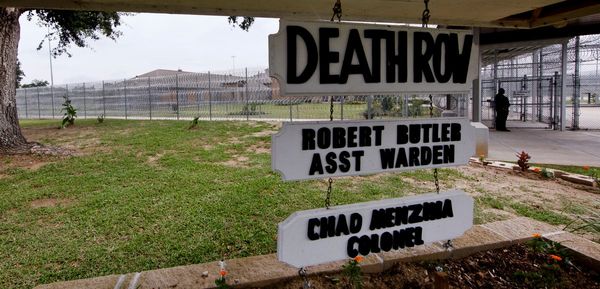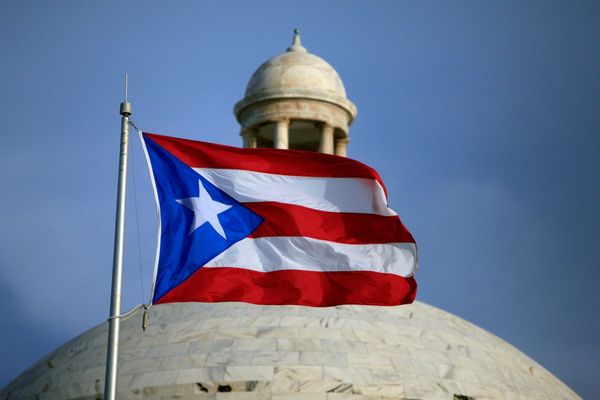
A man sees a bloke in long white robes and a headscarf walking down the street with a parrot on his shoulder and says, ‘Where did you get that?’. And the parrot says, ‘Arabia, there’s bloody millions of them there!’
Old Bernard Manning joke (tidied up)
The interim ruling by the International Court of Justice on charges of genocide against Israel has something in it to annoy and frustrate everyone. Without specifying that Israel was committing genocide in its destruction of Gaza, it states:
In the court’s view, at least some of the acts and omissions alleged by South Africa to have been committed by Israel in Gaza appear to be capable of falling within the provisions of the Convention.
The fact that the court can’t simply declare this is a genocide is a product of some of the paradoxes inherent in the concept of the term, as developed out of World War II, and the way it privileges some forms of mass killing over others.
When Raphael Lemkin coined the term “genocide” in 1943, he noted thus:
New conceptions require new terms. By ‘genocide’ we mean the destruction of a nation or of an ethnic group.
The term was a response to the Nazi destruction of whole peoples, but Lemkin’s initial focus was their destruction and extermination of the Polish nation, including the Jewish people within. History has reversed that, with the destruction of the Poles — 22% of all Poles were killed in World War II — disappearing into the shadows, in part due to the memory of Polish anti-Semitism as complicit in the Holocaust of the Jews (inconveniently for many on the right, Lemkin included, in a never-completed book on historic genocides, the destruction of Tasmanian Aboriginal society).
Lemkin thus included the multiple processes of genocide in his definition. That was not merely mass killing, but also child removal and making childbirth impossible. Lemkin’s intent appears to have been that this was a whole package: once you were genociding a people, you were throwing everything at them, all at once. When the United Nations was established, Lemkin’s definitions became part of its explicit mission.
But the trouble with this concept of “genocide” is that Lemkin, like almost everyone before the 1950s and ’60s in the West, found it impossible to fully think outside of the notion of the “nation” and the “ethnos” as a sort of pre-social collectivity one was simply part of. In thus picking out the destruction of “a people”, rather than simply “a lot of people”, as a supreme crime, and joining together utterly lethal measures (rapid mass killing) with less lethal ones (interrupting patterns of cultural transmission and heredation), Lemkin created two contradictions.
The first is that what is descriptively and analytically a special type of event came to have a special and superior moral character. This has had the effect — seen in Gaza — of making the destruction of a society that does not fit the mould of a “nation” or “ethnos” appear somehow a lesser crime. Consider this. If, in a future exchange, China and the US exchanged nuclear missiles, killing a few million people each in Ohio and Yunnan province, it would be a ghastly event. Now consider that the targets were Puerto Rico and Hainan Island respectively. Each would be wholly destroyed, two culturally and ethnically distinct peoples reduced to small numbers.
The latter event is pretty uncomplicatedly, two genocides. The former event is almost a cause for grim humour — who’s going to miss a few million Ohioans or Chinese? Of course, it would be seen as a vast horror. At the same time, such populations merge into the much larger cultural-national mass of which they are a part. Yet the murder and suffering will have been of exactly the same magnitude. The special features of the latter event — that Puerto Rican and Hainan culture will cease to continue, save as museum exhibits — are obviously real and distinct “extra” features of what has occurred. But overestimating the moral distinctiveness of it shares the same logic as that of the genocidaires themselves: that an ethnos, as a whole, matters more than actual people do, is the ultimate real.
This combines with the other contradiction, that of combining culturally destructive measures — making cultural reproduction impossible, for example — with rapid mass killing. Attached to the Holocaust, that has created an impossible standard for separating mass community destruction from mere war or violence — and that is being deployed by Israel’s advocates in the Gaza destruction. This isn’t the Holocaust, they say. They’re right: nothing really was or has been to date. The “Holocaust core” — the rapid killing of the five death camps: Treblinka, Sobibor, Belzec, Majdanek and Chełmno — was all done in about 18 months, around 10,000 people killed per camp per week, half a million overall for each, the greatest logistic problem for its commanders being the movement and disposal of the vast body mass. Met an Auschwitz survivor? I have, and so perhaps have you. Met a Belzec survivor? No-one has because no-one did.
But as I’ve noted, the “radical evil” of the Holocaust, too, has both descriptive and moral dimensions. Arguably there is something viscerally and instinctually worse in killing more than two million people in gas factories, its “shower” facilities looking like the changing rooms of modern gyms, its guards knocking back the orangey soft-drink Coke substitute that Coca-Cola Germany had developed for the German market — Fantasie or Fanta, as it was shortened to — than there is in working two million Black people to death over a decade or two in colonial plantations and mines, simply for financial profit. But the paradox is that making that comparison absolute then becomes immoral, a disregard of the evil visited upon the latter group, simply because it was an evil of means. Much of what makes the Holocaust such a focus — and the gas chambers, rather than the millions killed by mass shootings in Poland, its image — is its insane grotesquerie, which can mislead moral assessment.
Taken together, these two aspects of “genocide” disadvantage the Gazan population, because they are not a distinct “nation or people”, in that older sense. This is where it gets complicated. The whole notion of a “nation” is Eurocentric — describing a certain ensemble of language, culture, varying genetic heredity, and state form, which arose in Europe around the 1400s, came to prominence in the 19th century, and retroactively reconstructed Europe after World War I, when whole populations were swapped between new ethnic nations.
Many post-colonial peoples didn’t want nation-states in that form, and one of them was the Arabs. Freed from the Ottoman Empire, an ummah/community of multi-layered forms stretching from Morocco to Baghdad, the post-WWI genuinely radical leaders of the Arabs knew that cookie-cutter statehood — Lebanon, Iraq, Syria, Israel — was simply a device to create multiple competing clients of the British and French empires for the control of Suez. They were defeated in that, and the notion of bounded nationhood was introduced. The retroactive engineering of a national culture in these new states has had nothing like the success it has had in Europe, amazingly, because it is a purely European form. Insistence on its dominance allows the suffering of less defined social forms to be negated entirely.
Such as the people of Gaza. I mean what the hell is Gaza? It is simultaneously an ancient and distinct city, a known region, a once-autonomous and functioning community, and, more recently, a native reserve, an open-air prison and an experimentation zone for new weapons. The state of Israel and its supporters are getting away with presenting it as an “other” to Israel by invoking a sort of shadow nationhood, using people’s ignorance of how it came to be: a small seaside city that swelled first to a population of 500,000 in 1948, after the Zionists drove Palestinian Arabs there using mass anti-civilian terror, and which now is, or was, a reserve for their two and a half million descendants, who cannot return, even as landless workers, to the places where their families lived in living memory.
Gaza isn’t a nation. Gaza is a fenced-off reserve. Gaza is Coranderrk, and Palm Island, and Coonabarabran — and it is particularly sobering to see “centrist” First Nation leaders such as Marcia Langton dismiss the legitimacy of First Nations’ solidarity with Palestinians, simply part of the moral vacuity that lost them the referendum. So Gaza is held to be some autonomous entity, when it never really was, for the purposes of constructing it as a national enemy of Israel. But at the same time, the killing and maiming of 1% of its civilian population, and the terrorising of the whole of them, impact less because they are part of the wider Arab people — and the implicit rhetoric of the endless killing is, as the joke goes, “There’s bloody millions of them there.” The Eurocentric notion of genocide cannot adequately frame the colonialist form of mass killing that is happening in Gaza now.
Thus the conceptions of “genocide’, their roots in ethnicity and nationhood (already altered to, rightly, centre the destruction of the Jews in the post-war assessment of the Nazi process), are serving as the principle legitimation of the cynical, futile, deceitful, unnecessary, sadistic and exterminatory slaughter and destruction of a certain community and place, because it does not fit the frame applied by colonial powers 80 years ago. Yes, Arab civilisation will not be destroyed by the total destruction of Gaza, nor even distinctive Palestinian Arab society. But something of radical evil is occurring, is being applied on a mass scale, and its perpetrators are benefitting from the fact that its particular character is unnameable in our current theology of human rights.
If that has any strategic takeaways for the pro-Palestine movement, it is — while still certainly using the genocide term — to bring to the fore a simpler notion of community annihilation and destruction, of the terror of waiting in your flat for death, of watching your children die in hospital, of seeing anything you could rebuild put beyond use, of having to bear the swaggering arrogance of IDF soldiers filming themselves trashing your house, and on. All the more so, as a hedge against a legalistic finding under international law, which denies the Gazans their full recognition, and re-emboldens their destroyers.







